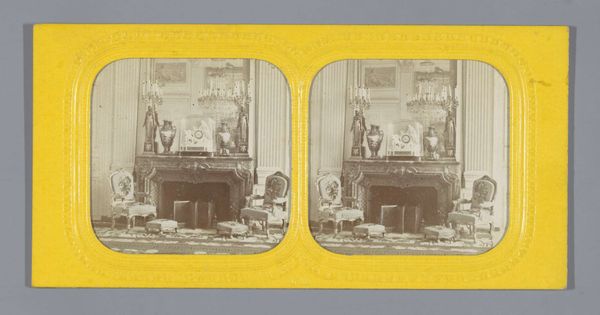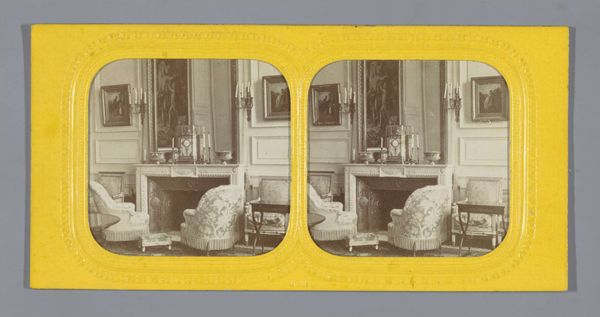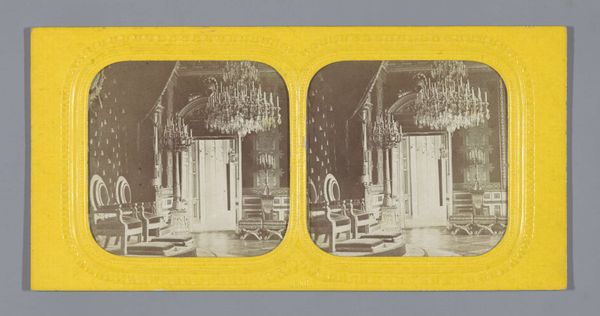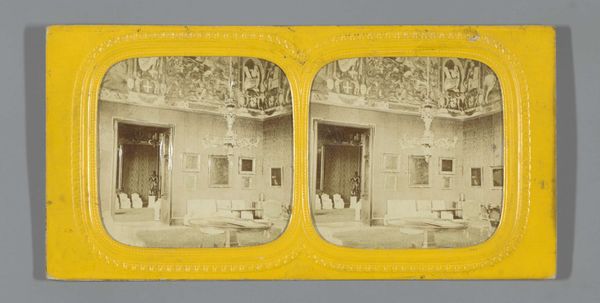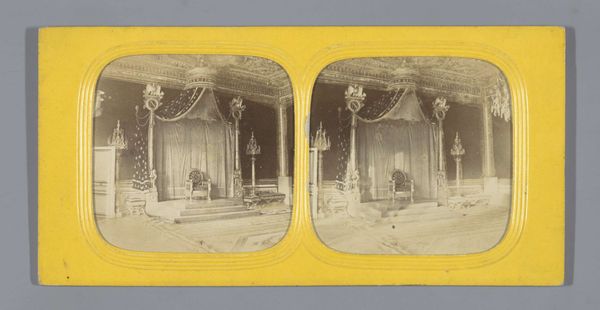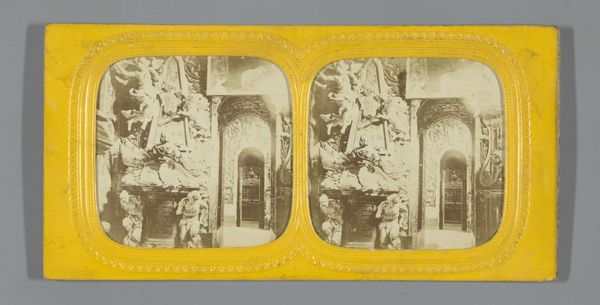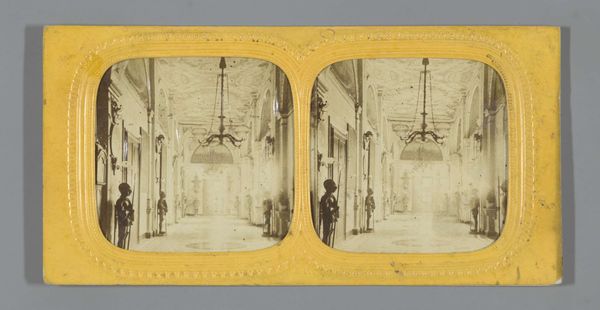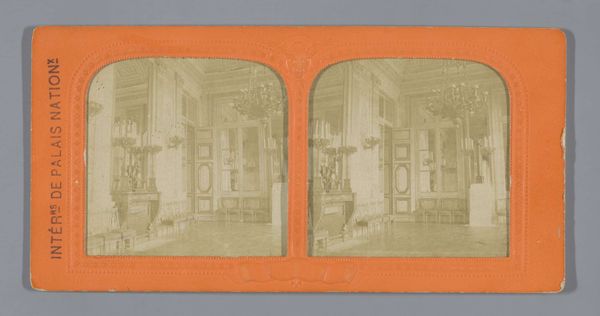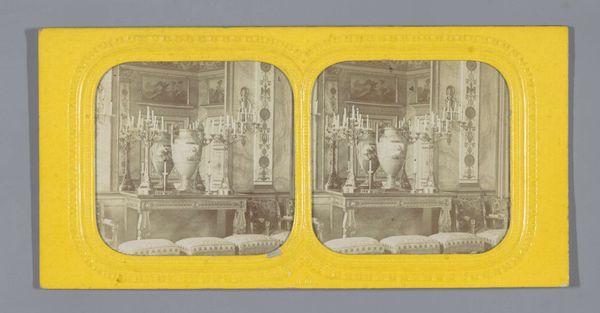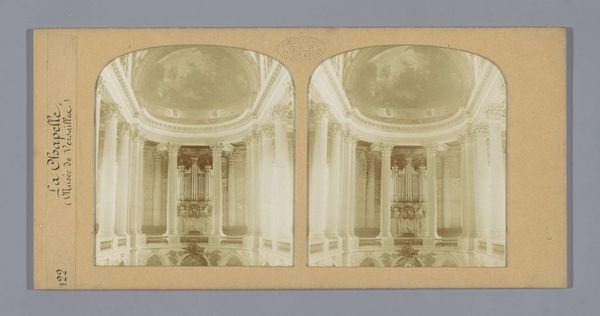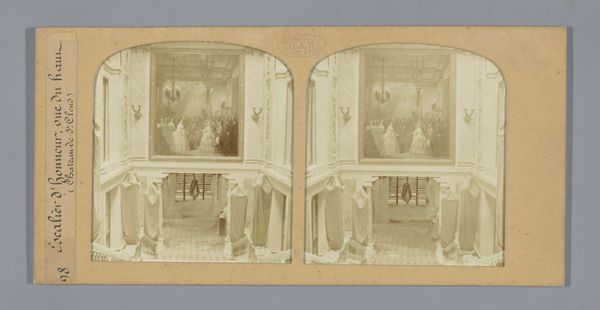
Interieur van de salon van de keizerin in het paleis van Compiègne, Frankrijk 1864 - 1879
0:00
0:00
photography, gelatin-silver-print
#
portrait
#
photography
#
intimism
#
gelatin-silver-print
#
genre-painting
#
realism
Dimensions: height 87 mm, width 176 mm
Copyright: Rijks Museum: Open Domain
Jules Marinier made this stereo card of the Empress’s salon at the Palace of Compiègne in France. Stereo cards like these were popular from the 1850s onwards and they were used as a way to bring distant places and people into the domestic space. But they were also used by the institutions themselves to document royal palaces. The Palace of Compiègne, not far from Paris, was one of three important royal residences alongside Versailles and Fontainebleau. Originally built in the 14th century, it was rebuilt in the 18th century and became a favored residence of Napoleon. Looking at this photograph, we get a sense of the imposing, formal interior design that would have characterized the court of Napoleon III. The trappings of luxury are everywhere, from the chandelier to the gilded mirror, each reflecting the imperial power. The image is silent on the human cost of such opulence. To learn more, we can look into government records or private archives. In doing so, we can better understand the way art is entwined with culture, commerce, and politics.
Comments
No comments
Be the first to comment and join the conversation on the ultimate creative platform.
